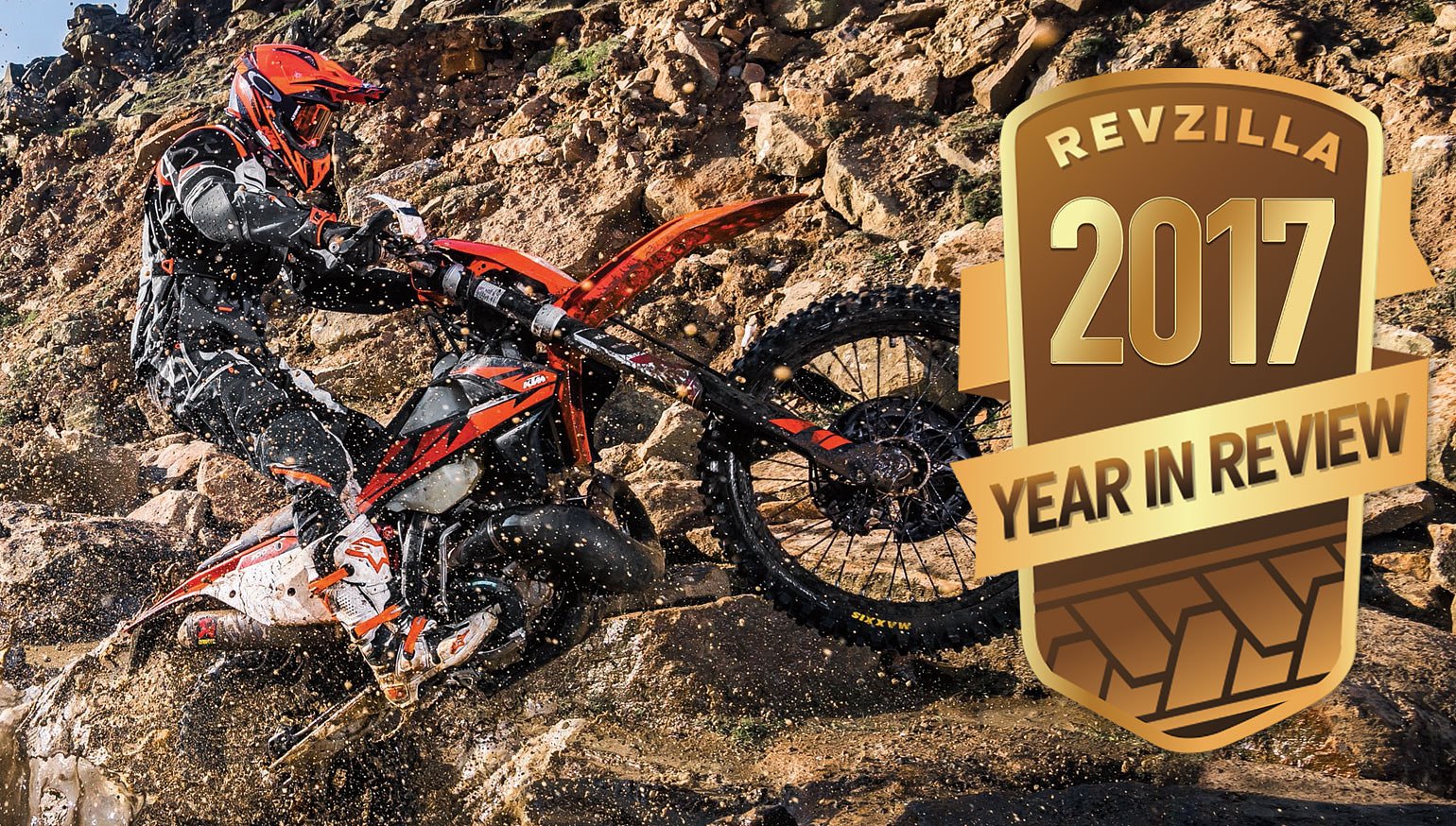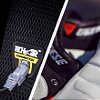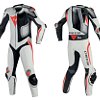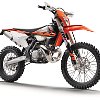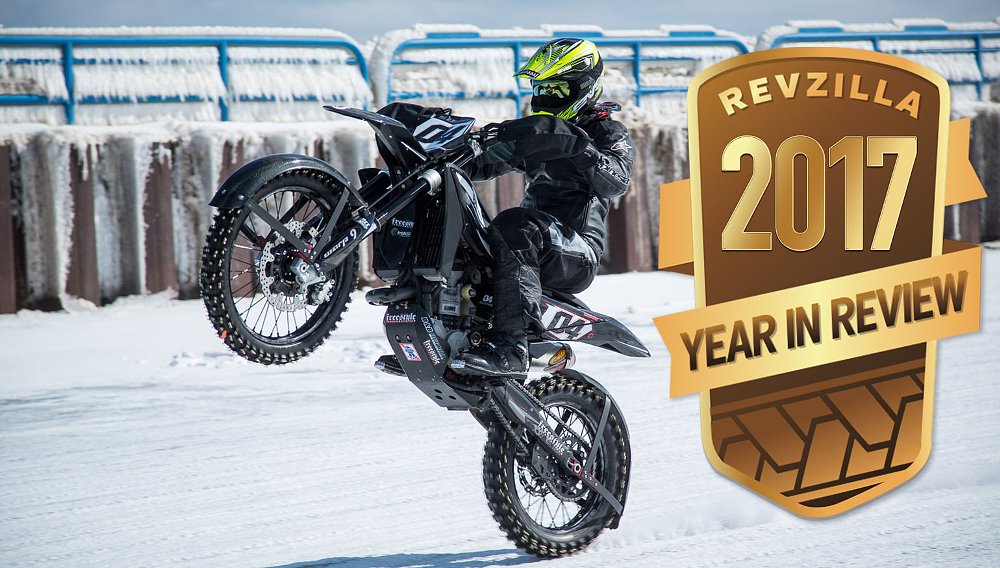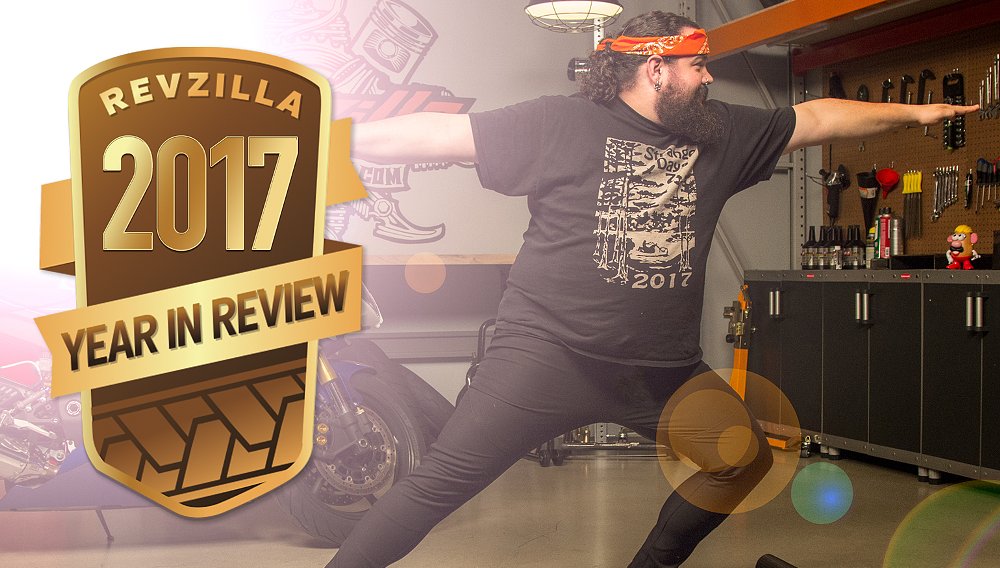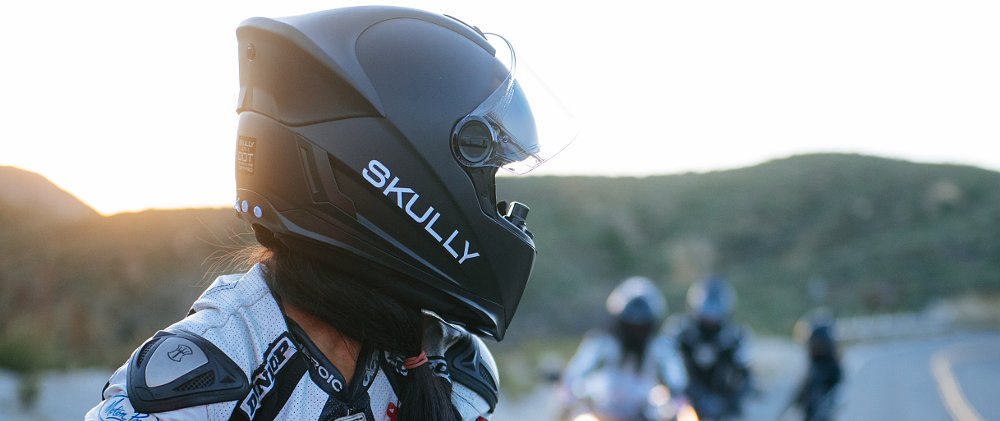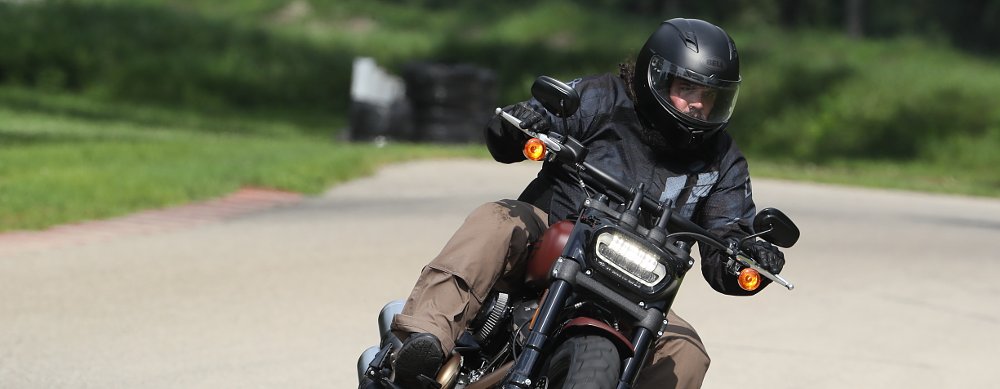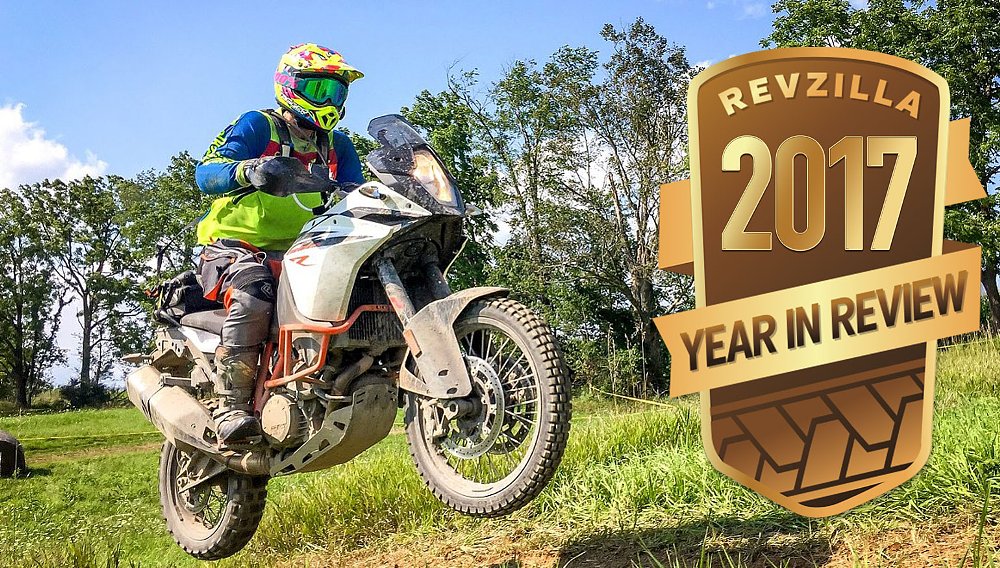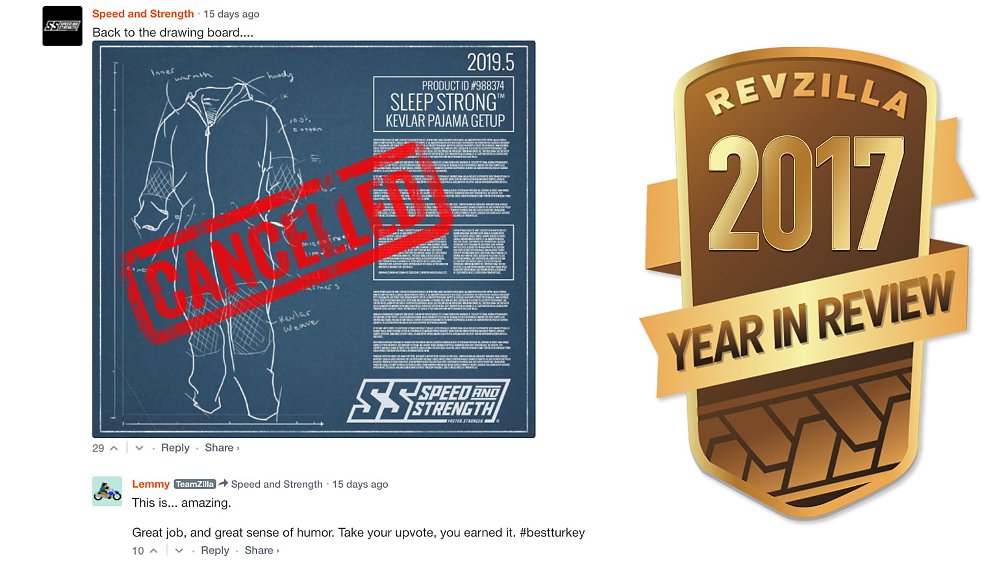If there is anything that I have learned throughout decades of science-fiction fanhood, it’s that real-world engineers should absolutely be held accountable for keeping up with the fantasies of novelists, playwrights, and movie makers. I'm still waiting on that Wonkavator.
While the scientists toil away against the laws of physics and such, we figured we’d bring you some of the best advancements that we have seen this year from the world of moto. From new tech (and revival of old tech), to prominent laws and bold business moves, these are a handful of the coolest and most noteworthy steps forward for the industry as a whole.
Advancement #1: Safety — Personal airbags
"The best defense... is defense." — Arnold Schwarzenegger
If you recall last year’s motorcycle gear predictions article, you’ll remember Anthony putting on his Nostradamus hat and stating his belief that riders could expect to see “airbag technology spread throughout the brands [they] know and love in 2017 and beyond.” Well, he was right. Last year when we published this article the amount of airbag technology available to non-professional riders was basically limited to universal options from brands like Spidi and Helite.

The main advancement in this arena can be seen not only in the fact that there are more players in the game (i.e. the Italian juggernauts), but rather the quantum leap in the technology that these entrants have brought to the table. With the first-to-market products that we saw last year, the airbag system was analog and required riders to be tethered to the bike. Though tethered options are highly effective (and cost a heck of a lot less), the newest advancements from Alpinestars and Dainese feature high-end, algorithm-based, gyroscope-equipped, digital deployment systems that take these vests, jackets, and race suits to a level that would make Lee Majors proud.

The downside? Well, if you didn’t already click through to those links above, grab a seat and ensure that your jaw has a soft place to land on the floor before reading on… because they cost up to $2,600! So yeah. For those of us not named Rockefeller, there is a bit of a barrier there. But, as with all technology, prices tend to drop quickly on the road to market saturation. If you don’t believe me, Google the price of a 4K TV in 2012. It gets better. I promise.

Advancement #2: Bike Tech — Fuel-injected two-strokes
“Raw power in the form of precision fluid movements with a bowling pin-type radar able to destroy everything in its path.” — Tim “The Tool Man” Taylor
In the world of “things I don’t want to write because it states, publicly, that Lemmy was correct,” the re-emergence of 2T bikes (now with fuel-injection) happened this year. For those who remember, the Big Fella predicted in the fall of 2016 that sooner or later the two-strokers would make a comeback, once a bit of fuel injection was introduced to the mix. Well, it turned out to be sooner, as in March of 2017 KTM, the long-standing champion of the two-stroke, announced precisely that.

The history of the decline of the 2T is multi-faceted and resides somewhere between governmental regulations, the cost to fight back vs. acquiesce, and the potential of improved profit margins in the land of four-strokes. While all of those played some role in the great vanishing act of two smokers, it was the former that got most of the attention, and rightfully so. While the other factors were legitimate points to be made, they likely wouldn’t have been relevant were it not for the press for cleaner emissions.

Fortunately for two-stroke fans, the scrappy Orange Austrian wild child continued on with their 2T technology, undeterred. It should be no surprise then that they were the ones who made the announcement in early in 2017 that they had developed the technology to scrap the carbs and allow their bikes to breathe cleanly enough to make City Hall happy. Dubbed “Transfer Port Inject” technology, this feature will be denoted with a “TPI” within their model line. Announced with three models (two in Europe, one in the United States), riders can look forward to better fuel economy, say goodbye to needing to pre-mix fuel, and enjoy what KTM is calling “a completely new experience in terms of power delivery and rideability.”
Advancement #3: Rider Tech — Skully Technologies Acquires Skully Inc.
“Vision without execution is hallucination." — Thomas Edison (slight variation to a Japanese proverb)
The world is full of great ideas, almost-had-its, and if-onlys. For all of their promise and potential, however, they don’t mean a damn thing if they exist in the mind of the dreamer alone.

Over the past handful of years, I can’t think of any product that has captured the collective attention, and shown as much possibility, as Skully Helmets. On the other hand, there have been few products that have ignited equal amounts of rage, and rightfully so. The promise of the original Skully helmet was surpassed only by the shitty-ness of the leadership that ran it into the ground. People got hosed. It was a very bad thing. But the proverbial phoenix didn’t rise from gold dust. It came from ashes. And if the new Skully command has anything to say about it, so too will their company.

With a handful of heavy hitters weighing into the market (BMW Motorrad, NUVIZ, etc.), the re-emergence of Skully is a net positive for those of us looking for the continued advancement of Heads Up Display technology. Competition begets innovation, and I’m betting the folks at Skully Technologies didn’t pony up, take on a loaded name, and put themselves into the fray without a solid plan as to how they would punch back. Based on a November 2017 analysis of the global HUD market, the total pool is projected to see a relatively healthy compound annual growth rate (CAGR) of 12.34 percent through 2021 (you can get the full report here, for only slightly more than a Dainese D-Air jacket).
Advancement #4: New Laws — Legal lane splitting goes into effect In California
“Do not go where the path may lead, go instead where there is no path and leave a trail.” — Ralph Waldo Emerson
You probably heard about the the new law in California (it actually passed in August of 2016) that went into effect at the beginning of this year. We covered it in our fifth article of 2017 along with a handful of other new laws that leaned in favor of those who lean on their favorite form of locomotion (i.e. they were good for motorcyclists). This law is important because for the first time in the United States, legislature is on the books that states, unequivocally, that those who ride on two wheels have the legal right to get to their destination faster than those poor souls who sit in cars in gridlocked traffic. More importantly still, it can help to keep riders safer. If you live in California, you can split lanes. Those who don’t like it can take it up with their representatives in Congress and enjoy the commensurate years-long bureaucratic waiting period that follows.

OK, so the astute reader (which all of you are) will probably note (correctly) that this doesn’t really change much for those who ride in California. Lane-splitting was ubiquitous before, and if someone in California felt uncomfortable splitting lanes on December 31, 2016, the likelihood of them doing so on January 1, 2017, just because it was spelled out in the law, is minimal. But this isn’t about getting new riders in California to split lanes or to not.
Being the first at anything significant is hard. California could have continued with the status quo. However, they took a different path and paved a new lane (proverbially, and literally) that will hopefully leave an example for other states to follow.
Advancement #5: Business — Hard Truths: Harley kills the Dyna and Softail
“In any moment of decision, the best thing you can do is the right thing, the next best thing is the wrong thing, and the worst thing you can do is nothing.” — Theodore Roosevelt
Whenever you write an opinion about the MoCo, you are bound to run up against ample amounts of dissension. There is the group of riders who feel Harley’s are overweight, overpriced, overhyped, and underperforming. Conversely, there are the diehards who don’t give a damn what makes logical sense and would sooner sell a kidney than ride a lesser mobile. Both opinions are valid, and both are probably going to be in opposition to the next few paragraphs.

Make no mistake, Harley-Davidson is in the midst of a very important “moment of decision.” It’s no secret that new motorcycle sales in the United States are low. For Q3 alone they were down 9.2 percent overall. As the biggest fish in a pond losing water, this affects the MoCo more than just about anyone else selling motorcycles. Even in Q2, traditionally the most lucrative quarter for motorcycle sales in the States, Harley struggled mightily (Q3 was nothing to write home about, either).

With that in mind, in my opinion, the most interesting advancement of the year with regard to a 10,000 foot view of the industry is the one that Harley made when they said sayonara to the traditional Dyna and Softail models. This was an opinion that faced some disagreement within the ZLA walls, as well. It was brought up that the new Softail chassis is “eh” at best and did not make marked improvements. Fair. But people don’t ride chassis. They ride motorcycles. And when reviewed, the final package that Harley delivered with bikes like the 2018 Fat Bob was said to be good enough to convert non-Harley riders to the brand and also rejuvenate the faith in HD engineering amongst current enthusiasts. That was precisely the mark that Harley was shooting for.

Harley needed to do something. Full stop. End of story. Regardless of whether you feel that they have taken the right step forward in this, or if you feel that the step was on the right path and merely too short of a stride, the fact of the matter is that they have taken a step. They made a decision to take a big swing by dumping R&D dollars into modernizing a lineup, and they did so knowing full well that many would proclaim that they whiffed mightily.
And yet, they decided anyway.
Conclusion
Well, I exceeded my word count about two paragraphs ago, so… that’s it. There were definitely big advancements that happened this year that weren’t covered here, and there are plenty more that we would like to see in the imminent future. So, until next year, here’s to hoping that innovation within the motorcycle industry continues advancing...
“To infinity, and beyond!” — Buzz Lightyear




